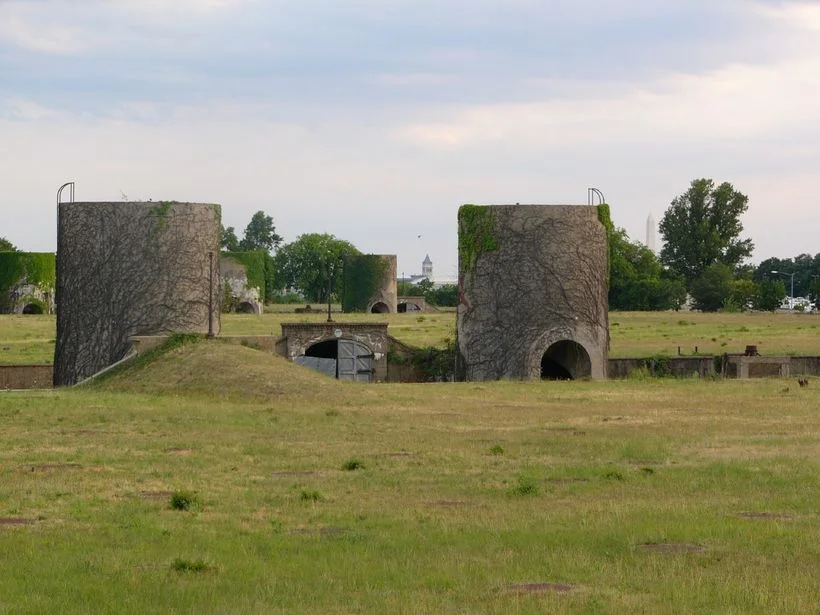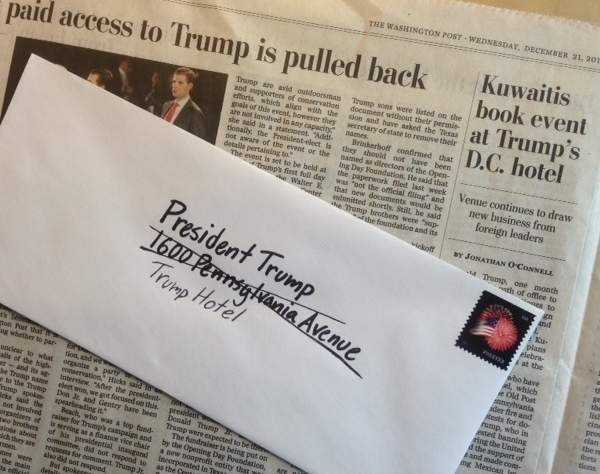The Fight to Save McMillan Park Isn’t Over
Published at HuffPost.
It looked like the David-versus-Goliath fight to save a historic park in the nation’s capital had, after nearly three decades, finally run its course.
On December 7th, D.C. Mayor Muriel Bowser and city officials broke ground on a $720 million development on the 25-acre McMillan Park and Sand Filtration Plant site.
Developers and city officials were eager to take advantage of the green expanse, which filtered the city’s water beneath its surface for 80 years, and turn it into two million square feet of mostly office space and high-end housing, with a six-acre park.
At the groundbreaking Bowser said the pressing question was: “When are they going to do something about that place?” “Now,” she told the assembled crowd before she and other officials grabbed shovels.
But the very next day the project was halted.
Overturned
In a lawsuit brought by Friends of McMillan Park, opponents of the planned development, the D.C. Court of Appeals vacated decisions of the D.C. Zoning Commission and Mayor’s Agent for Historic Preservation, which had both approved the deal. The court ruled that the city, which owns the land, provided insufficient justification for the mass development, which would destroy much of the historic site.
The court expressed concern over the project’s impact on surrounding communities, which already struggle with grinding traffic, and, in low-lying neighborhoods to the south, like Bloomingdale, flooding.
To address the flooding, D.C. Water is using one of McMillan’s 20 underground cells to bore a massive tunnel deep underground, and another cell to store storm water.
It’s unclear what impact an additional two million square feet of development on McMillan would have on flooding, particularly with other huge projects coming online – including across the street at Washington Hospital Center, nearby at the Armed Forces Retirement Home, and around Catholic University in Brookland.
The D.C. Court of Appeals also questioned whether the project may push out residents in surrounding communities, and called on the Zoning Commission to “explicitly address… arguments concerning issues of gentrification, land values, and displacement.”
While most media reports have characterized the ruling as a mere set back, Jeffrey Anderson, a reporter who’s provided thorough coverage on McMillan, sees it differently. It’s a “stunning rebuke,” he wrote.
The decision not only rebukes the District but also the development team, which has been controversial in its own right.
A “Flawed” Process
The city’s process for selecting the site’s developer – Vision McMillan Partners (VMP), a coalition led by powerhouse EYA – was “flawed,” according to D.C. Auditor Kathy Patterson, who called for the project to be re-bid.
While VMP won a competitively bid contract in 2007 to prepare the land for development, the much larger contract for master developer and vertical construction, which VMP also managed to get, was never put up for competitive bidding, the auditor found.
This “ultimately resulted in a greatly expanded role and exclusive rights for VMP, all without the benefit of a competitive process,” the auditor concluded.
Ignoring the auditor’s concerns, D.C. officials pressed on.
This arrangement (which one government representative called “nontraditional”) has provided VMP with more than $6 million in taxpayer money.
Tony Norman, an attorney who has fought for over twenty years to save McMillan Park, says these tax dollars have provided a lifeline for VMP. “Without these funds, the developers would’ve dropped the project a long time ago.”
“A Gross Misappropriation of Taxpayer Dollars!”
In addition to helping keep VMP afloat through years of slowdowns and setbacks, these taxpayer funds have also been used to target the project’s grassroots opposition.
Using D.C.’s Freedom of Information Act, project opponents discovered that VMP hired a PR firm to “neutralize” and “discredit” them, as well as to “provide continuous political cover to local elected officials” supporting the development.
It was this PR firm that combatted the grassroots “Save McMillan Park” signs with their confusingly similar “Create McMillan Park” signs, advocating the development.
Once it was exposed, VMP quickly refunded the city the $28,456 tax dollars it paid Fontaine & Company, a PR firm that also provided “grassroots advocacy” to Walmart in Baltimore.
“Simply stated, public funds were paid to a public relations firm to discredit D.C. citizens who were opposing the planned development,” read an editorial in The InTowner. “How’s that for a gross misappropriation of taxpayer dollars! Why hasn’t anyone yet been prosecuted?”
(One possible explanation for the lack of investigation into the deal is the revolving door between employees of the District and the development team, which Anderson documented.)
A Rich History
The questionable arrangement between the city and developers comes into sharp focus considering McMillan’s history.
Completed in 1905, the park was designed by the Olmsted firm, famous for designing Central Park, and working on the U.S. Capitol grounds, among other major projects.
Beneath McMillan’s 25 grassy acres are 20 one-acre cells, each with a thick layer of sand. Until 1985, when D.C. began treating its water chemically, the site provided natural filtration: water pumped into the cells was filtered as it made its way through the sand. The cleansed water, which led to dramatic improvements in public health, was piped downtown, including to the Capitol.
Fearing attacks on the water system, the park was closed to the public during World War II, and never reopened.
McMillan’s history isn’t just underground. Above ground, it was one of the first parks to have de facto integration. Before homes were air-conditioned, black and white residents seeking relief from D.C.’s suffocating summers would sleep on blankets out on the grass, enjoying the breeze.
McMillan is on the National Register of Historic Places, is recognized as a D.C. Historic Landmark, and was declared a park by President Taft.
“The city is passing up an opportunity to do something extraordinary on a national, historic site,” says Norman. And with the court’s rejection, D.C. “has a chance to make it right, and get a better deal for the community.”
In the below video (by portraitcitydc.com), Bloomingdale resident Ella Walker describes her childhood summers at McMillan Park, and neighboring McMillan Reservoir.
Photo Credit: Dale Sundstrom via Flickr



